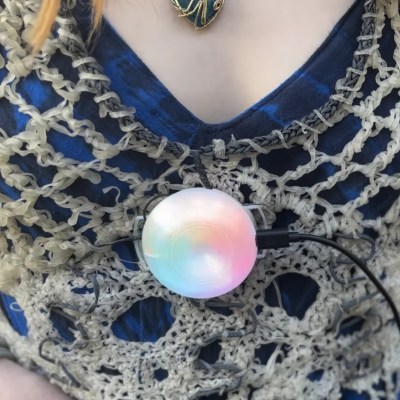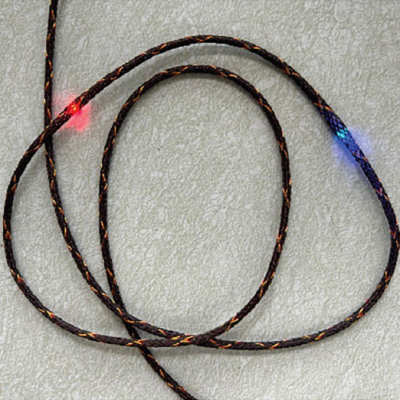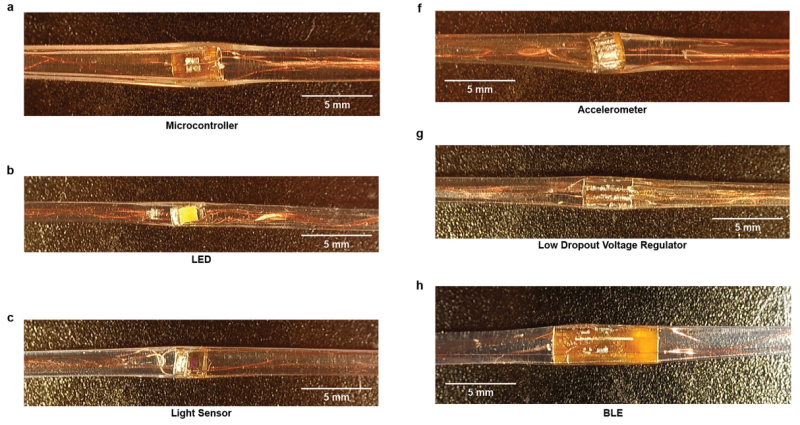[ombates] shares a step-by-step method for making a conductive bio-string from scratch, no fancy equipment required. She demonstrates using it to create a decorative top with touch-sensitive parts, controlling animations on an RGB LED pendant. To top it off, it’s even biodegradable!
 The string is an alginate-based bioplastic that can be made at home and is shaped in a way that it can be woven or knitted. Alginate comes primarily from seaweed, and it gels in the presence of calcium ions. [ombates] relies on this to make a goopy mixture that, once extruded into a calcium chloride bath, forms a thin rubbery length that can be dried into the strings you see here. By adding carbon to the mixture, the resulting string is darkened in color and also conductive.
The string is an alginate-based bioplastic that can be made at home and is shaped in a way that it can be woven or knitted. Alginate comes primarily from seaweed, and it gels in the presence of calcium ions. [ombates] relies on this to make a goopy mixture that, once extruded into a calcium chloride bath, forms a thin rubbery length that can be dried into the strings you see here. By adding carbon to the mixture, the resulting string is darkened in color and also conductive.
There’s no details on what the actual resistance of a segment of this string can be expected to measure, but while it might not be suitable to use as wiring it is certainly conductive enough to act as a touch sensor in a manner similar to the banana synthesizer. It would similarly be compatible with a Makey Makey (the original and incredibly popular hardware board for turning household objects into touch sensors.)
What you see here is [ombates]’ wearable demonstration, using the white (non-conductive) string interwoven with dark (conductive) portions connected to an Adafruit Circuit Playground board mounted as an LED pendant, with the conductive parts used as touch sensors.
Alginate is sometimes used to make dental molds and while alginate molds lose their dimensional accuracy as they dry out, for this string that’s not really a concern. If you give it a try, visit our tip line to let us know how it turned out!




















